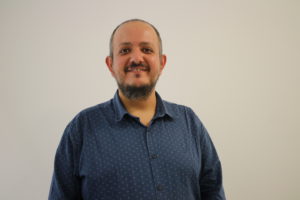Short Bio:
 I create bio-inspired miniature robots through research at the interface of mechanical engineering and robotics. I received my B.S. (2007) in Mechatronics Engineering at Sabanci University in Istanbul, Turkey and my M.S. (2010) and Ph.D. (2012) in Mechanical Engineering at Carnegie Mellon University in Pittsburgh, Pennsylvania. During my graduate studies, I worked on control and automation of tip-directed nanoscale fabrication and design, modeling, and implementation of a water strider-inspired floating robot at Prof. Metin Sitti’s Nanorobotics Laboratory. Following PhD, I joined Prof. Robert J. Wood’s Microrobotics Laboratory as a postdoctoral researcher working on fabrication and control of miniature crawling robots at Harvard University’s School of Engineering and Applied Sciences and the Wyss Institute for Biologically Inspired Engineering. I have been an assistant professor at Bilkent University Mechanical Engineering Department since 2015.
I create bio-inspired miniature robots through research at the interface of mechanical engineering and robotics. I received my B.S. (2007) in Mechatronics Engineering at Sabanci University in Istanbul, Turkey and my M.S. (2010) and Ph.D. (2012) in Mechanical Engineering at Carnegie Mellon University in Pittsburgh, Pennsylvania. During my graduate studies, I worked on control and automation of tip-directed nanoscale fabrication and design, modeling, and implementation of a water strider-inspired floating robot at Prof. Metin Sitti’s Nanorobotics Laboratory. Following PhD, I joined Prof. Robert J. Wood’s Microrobotics Laboratory as a postdoctoral researcher working on fabrication and control of miniature crawling robots at Harvard University’s School of Engineering and Applied Sciences and the Wyss Institute for Biologically Inspired Engineering. I have been an assistant professor at Bilkent University Mechanical Engineering Department since 2015.
Education:
- PhD., Mechanical Engineering, Carnegie Mellon University (2012)
- M. Sc., Mechanical Engineering, Carnegie Mellon University (2010)
- B. Sc., Mechatronics Engineering, Sabancı University (2007)
Research:
As an engineer, my motivation is both scientific and application-based; I strive to answer scientifically interesting real-life problems in miniature robotics. Through this process, I often look to nature for inspiration because real-life problems often have solutions that have evolved in nature. With an application-based motivation and a bio-inspired approach, I conduct robotics research that is experimental, interdisciplinary, and collaborative. Testing theories and building prototypes are crucial for robotics research. Therefore, my research methodology focuses on theorizing solutions, building instruments to rigorously experiment on these theories, and building prototypes. In addition, I believe in a collaboration-based interdisciplinary approach to research, primarily because problems and their solutions are rarely confined to a narrow branch of science or engineering.
